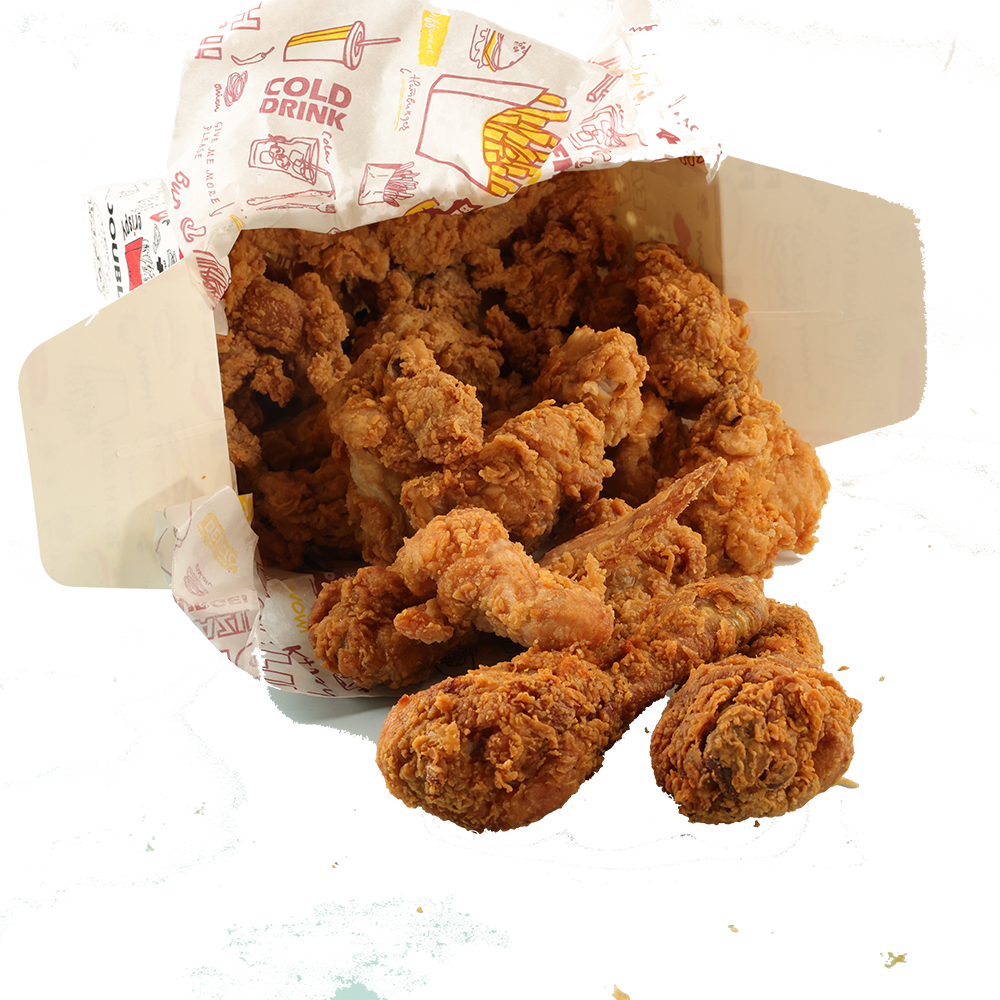Deep-fried chicken is a classic comfort food loved by many, and cooking it to perfection is a fine art. You might wonder how long it takes to deep fry chicken for that ideal crispy exterior and tender, juicy interior. This article will explore the factors that impact deep-frying time, provide some general guidelines, and offer tips for achieving the ultimate deep-fried chicken experience. Follow these recommendations to satisfy your cravings and impress your friends and family with your deep-frying prowess.
Factors Affecting Deep-Frying Time
- Chicken Size and Cut The size and cut of your chicken pieces play a critical role in determining the ideal frying time. Smaller pieces, like wings and drumettes, typically cook faster than larger pieces, such as thighs and breasts. Bone-in pieces also take longer to cook than boneless cuts. By being aware of these differences, you can better estimate the cooking time for your particular chicken pieces.
- Oil Temperature Maintaining a consistent oil temperature is key to achieving the perfect fried chicken. Too low, and your chicken will absorb too much oil and become greasy; too high, and the exterior will burn before the interior has a chance to cook through. The ideal oil temperature for deep-frying chicken is around 350°F (175°C). Monitor the temperature using a deep-fry thermometer and adjust your heat source accordingly.
- Breading or Coating The type of breading or coating you use on your chicken will also impact the frying time. A simple flour coating will cook faster than a thicker batter or multiple layers of breading. If you prefer a crispier, more substantial crust, keep in mind that the additional layers will require a bit more time in the oil.
General Guidelines for Deep-Frying Chicken
- Chicken Wings and Drumettes: 8-10 minutes These smaller, more tender cuts cook relatively quickly. Be sure to turn them occasionally for even cooking, and use a meat thermometer to ensure they reach an internal temperature of 165°F (74°C).
- Chicken Thighs and Legs: 12-15 minutes Bone-in chicken thighs and legs require more time to cook through. Turn them every few minutes to ensure even browning, and use a meat thermometer to check that they reach an internal temperature of 165°F (74°C).
- Chicken Breasts: 15-18 minutes Bone-in chicken breasts take the longest to cook, and boneless breasts will cook slightly faster. As with other cuts, turn them occasionally for even browning and check the internal temperature with a meat thermometer to ensure it reaches 165°F (74°C).
Tips for Perfect Deep-Fried Chicken
- Preheat Your Oil Before adding your chicken to the oil, ensure it has reached the ideal frying temperature of 350°F (175°C). A deep-fry thermometer is essential for monitoring the temperature and maintaining consistency.
- Don’t Overcrowd the Fryer Adding too many pieces of chicken at once can cause the oil temperature to drop, resulting in uneven cooking and a greasy texture. Fry in small batches to maintain optimal oil temperature.
- Use a Wire Rack to Drain Excess Oil After removing your chicken from the oil, place it on a wire rack set over a baking sheet to allow excess oil to drain. This helps to preserve the crispy exterior while preventing the chicken from becoming soggy.
- Keep Fried Chicken Warm While Frying Additional Batches To keep your fried chicken warm and crispy while you finish cooking additional batches, place the wire rack with the cooked chicken in a preheated 200°F (93°C) oven. This will maintain the temperature and texture of the chicken until you’re ready to serve.
- Season Immediately After Frying To maximize flavor, season your freshly fried chicken with salt or your preferred seasoning blend immediately after it comes out of the oil. This helps the seasoning adhere to the hot, crispy exterior and enhances the overall taste.
- Let the Chicken Rest Before Serving Allow your fried chicken to rest for a few minutes before serving. This brief resting period helps the juices redistribute within the meat, ensuring a tender and juicy bite.
- Experiment with Marinades and Brines To add extra flavor and tenderness to your fried chicken, consider marinating or bringing the meat before frying. Popular options include buttermilk, pickle juice, or a simple saltwater brine. Experiment with your favorite flavors to create a personalized fried chicken masterpiece.
Deep-frying chicken to perfection requires attention to detail, from the size and cut of the chicken to the oil temperature and breading choice. By following the general guidelines and tips provided in this article, you’ll be well on your way to enjoying crispy, juicy, and delicious deep-fried chicken. Remember that practice makes perfect, so don’t be afraid to hone your skills and experiment with different techniques and flavors to create your ultimate fried chicken experience.

